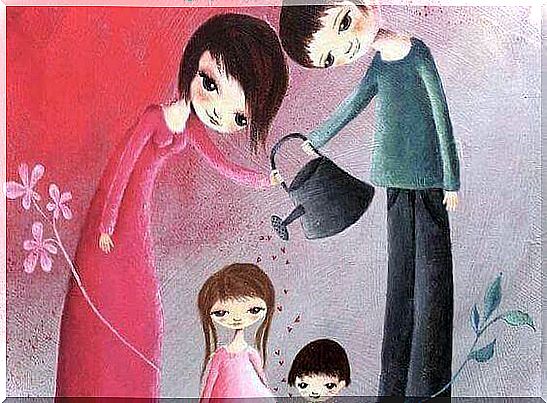Educate Children Without Limits And They Will Gouge Out Your Eyes

“Breed crows and they’ll gouge out your eyes,” says the popular saying that we often act well intentioned and get paid ingratitude. This same saying can be applied to the education of children without limits.
There are many questions and doubts that come up when we need to raise children, different emotions arise during this process, especially when we need to define boundaries. It is common for many parents to have doubts and may even feel “bad parents” when making decisions to establish norms and guidelines for their children.
To answer so many questions that arise we have many articles, books and information about childcare. Just go to a bookstore or search the internet and you will find many tips that are not always coherent and correct.
What is and is not “a limit”
Many people associate the word limit with something negative and believe that setting limits involves not taking the child’s opinions into account. However, this concept is far from others like shouting, irritating or ignoring, and comes closer to the concept of structuring, regulating and teaching. Setting a limit does not imply raising your voice, getting angry, or disrespecting the other.
Educating means saying “no” to requests that cannot or should not be carried out and teaching the child that sometimes we have to wait to get what we want. It also involves placing consequences for behaviors that must be corrected and be consistent with the decisions made.

It is not necessary for parents to raise their voices, get angry or constantly threaten their children. The message can be conveyed calmly, clearly and without too many repetitions. Never make threats you won’t follow through.
“Daddy, buy me Peppa Pig cake?”
Imagine you are in a supermarket and your daughter wants to buy Peppa Pig cake. It is not the time or the occasion to buy the cake and you say no. Faced with his answer, his daughter insists, starts crying and kicking on the floor. At this point you start to feel ashamed, because people start looking at you. This causes a lot of irritation and to put an end to the tantrum and so that the show doesn’t continue you buy the cake for your daughter. She’s happy with her cake, shuts up, you don’t feel ashamed anymore and the purchase can continue smoothly.
In this example, we can see that when the parents give in, they are relieved because the daughter has stopped crying, they are no longer ashamed and the anger is over. However, she has learned that using tantrums can get you what you want.

Although it seems that at the time the problem is under control, if this becomes habitual, tantrums can increase and become standard behavior for the child to achieve what he wants.
Patterson and his negative reinforcement trap
Patterson’s coercion theory and its negative reinforcement trap explain very well the previous example and how it is less expensive and easier for parents to give in to the inappropriate requests of children. However, in the long run, the cost will be much higher because inappropriate behaviors will be reproduced at an exponential rate.
In the face of improper conduct, such as a tantrum, aggression or threats, the parents give in and both sides “feel good”: the parents manage to make the child stop crying and stop bothering while he gets what he wants.
In the short term, it seems that both sides end up winning, but the long-term consequences may not be so pleasant. The child will learn to manipulate the adult through these behaviors and will use them more regularly. On the other hand, parents will not be able to control their child’s behavior unless they give him what he asks for.
The Consequences of Raising Children Without Limits
People who have not learned to limit themselves often have a low tolerance for frustration, difficulty controlling their emotions, and are unable to meet norms and obligations. They are manipulative and make the other feel bad to achieve their goals.

Impertinence, demanding privileges, lack of perseverance and effort, impatience, poor collaboration, behavioral problems, aggressiveness or even the destruction of objects are some of the problems that the lack of limits can cause.
In behavioral disorders that are characterized by a constant challenge and breaking the rules, it is common to find an education without limits where the child orders, commands and decides.
If you don’t educate, who will educate?
Psychologist Teresa Rosillo recently said in an interview: “we forgot to tell children that their parents are in charge” . There are many families where the child has the last word and adults need to adjust their plans and routine to the child’s demands and whims.
It is the parents, and not other entities or persons, who have the duty and obligation to educate their children. You have to listen, teach them what is right and wrong, say “not now”, “we’ve talked about it” or “it will have to wait”. It is often necessary to frustrate them and teach them to overcome this feeling. Education is not an easy task, but if parents don’t assume this role, who will?









